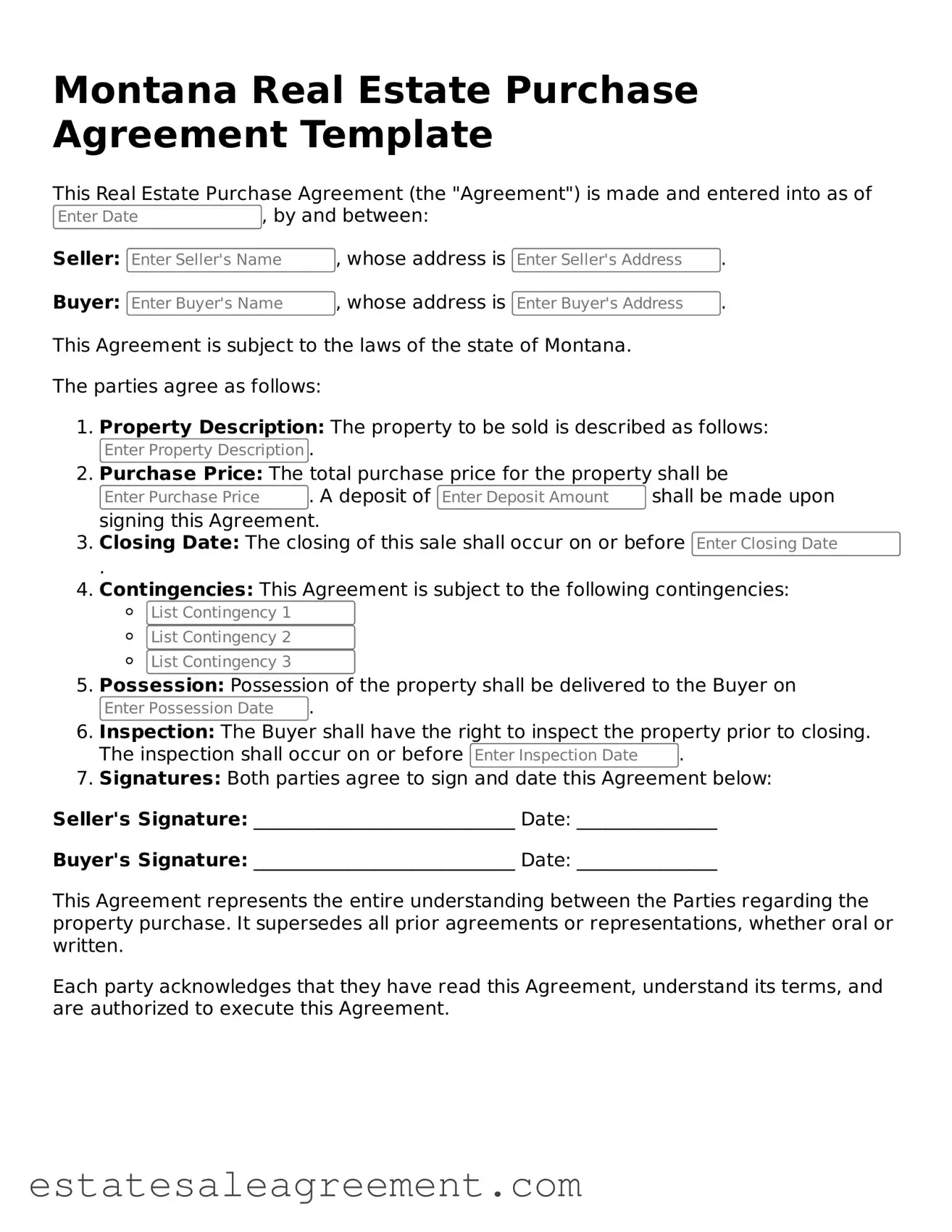What is a Montana Real Estate Purchase Agreement?
A Montana Real Estate Purchase Agreement is a legally binding contract between a buyer and a seller for the purchase of real property in Montana. This document outlines the terms and conditions of the sale, including the purchase price, financing arrangements, and contingencies. It serves to protect the interests of both parties involved in the transaction.
What key components are included in the agreement?
The agreement typically includes essential details such as the names of the buyer and seller, property description, purchase price, earnest money deposit, closing date, and any contingencies. Contingencies might include financing, inspections, or the sale of the buyer's current home. Each component is crucial for ensuring a smooth transaction.
Is the Montana Real Estate Purchase Agreement required by law?
While it is not legally required to use a written agreement for real estate transactions, it is highly recommended. A written agreement helps clarify the terms of the sale and provides legal protection. Without it, disputes may arise, and verbal agreements can be difficult to enforce.
Can I modify the Montana Real Estate Purchase Agreement?
Yes, the agreement can be modified to suit the needs of both parties. However, any changes must be made in writing and agreed upon by both the buyer and seller. It is important to ensure that all modifications are clear and documented to avoid misunderstandings later on.
What happens if either party fails to fulfill their obligations?
If either party fails to meet their obligations as outlined in the agreement, the other party may have legal recourse. This could include seeking damages or specific performance, which means forcing the non-compliant party to fulfill their part of the agreement. It is advisable to consult a legal professional in such situations.
Do I need a real estate agent to complete this agreement?
No, you do not need a real estate agent to complete a Montana Real Estate Purchase Agreement. However, having an agent can be beneficial. They can provide valuable guidance, help negotiate terms, and ensure that all necessary disclosures are made. If you choose to go without an agent, be sure to thoroughly understand the terms and implications of the agreement.
How can I ensure that the agreement is legally binding?
To ensure the agreement is legally binding, both parties must sign the document. Additionally, it is advisable to have the signatures notarized, which adds an extra layer of authenticity. Make sure all terms are clear and unambiguous to avoid potential disputes.
What is the role of earnest money in the agreement?
Earnest money is a deposit made by the buyer to demonstrate their commitment to the purchase. This money is typically held in escrow until the closing of the sale. If the transaction proceeds as planned, the earnest money is applied toward the purchase price. If the buyer backs out without a valid reason, the seller may retain the earnest money as compensation for their time and effort.
Where can I find a Montana Real Estate Purchase Agreement template?
Templates for the Montana Real Estate Purchase Agreement can be found online through various legal form websites, local real estate associations, or by consulting with a real estate attorney. It is important to use a template that complies with Montana laws and regulations to ensure its validity.
